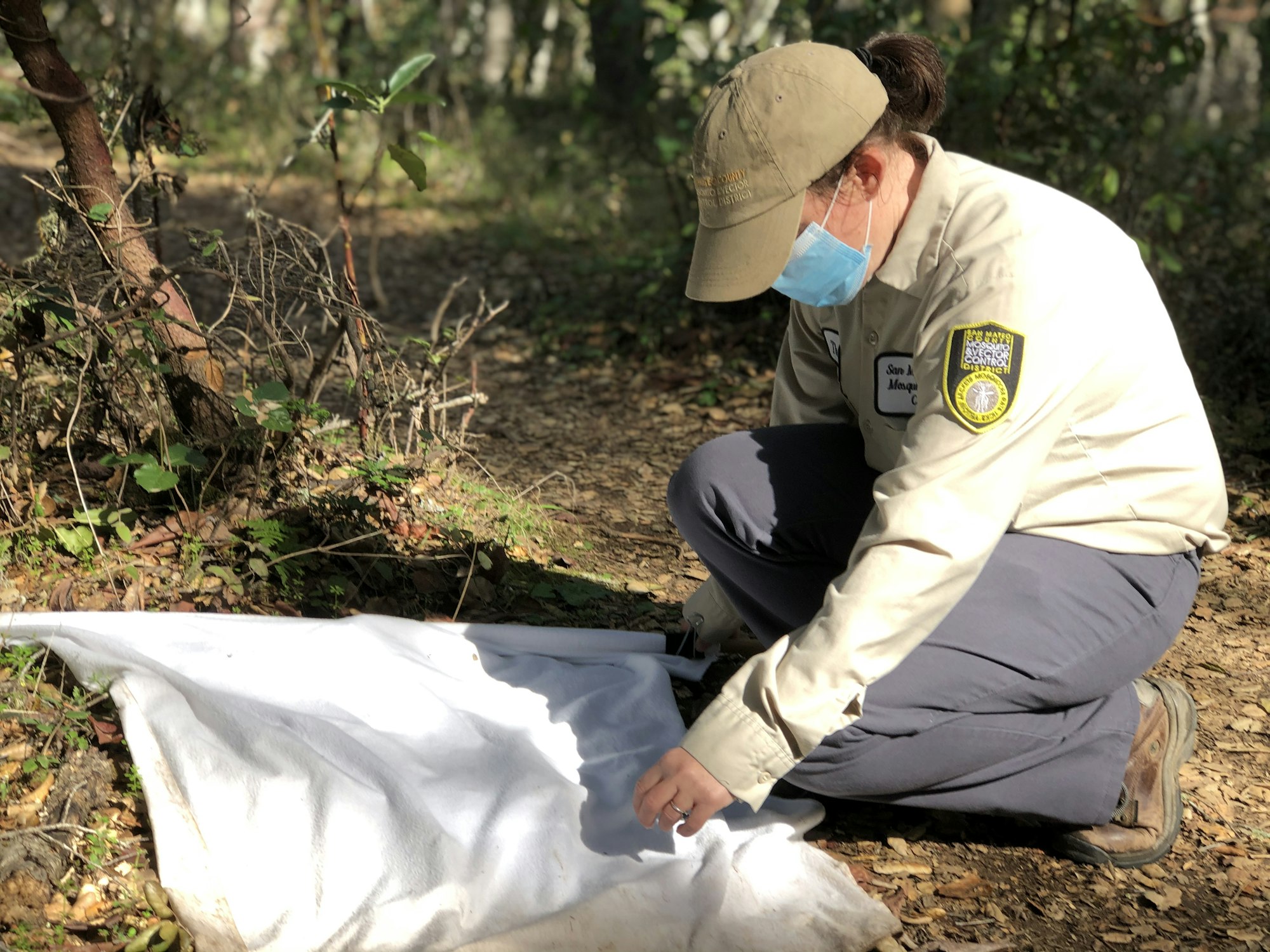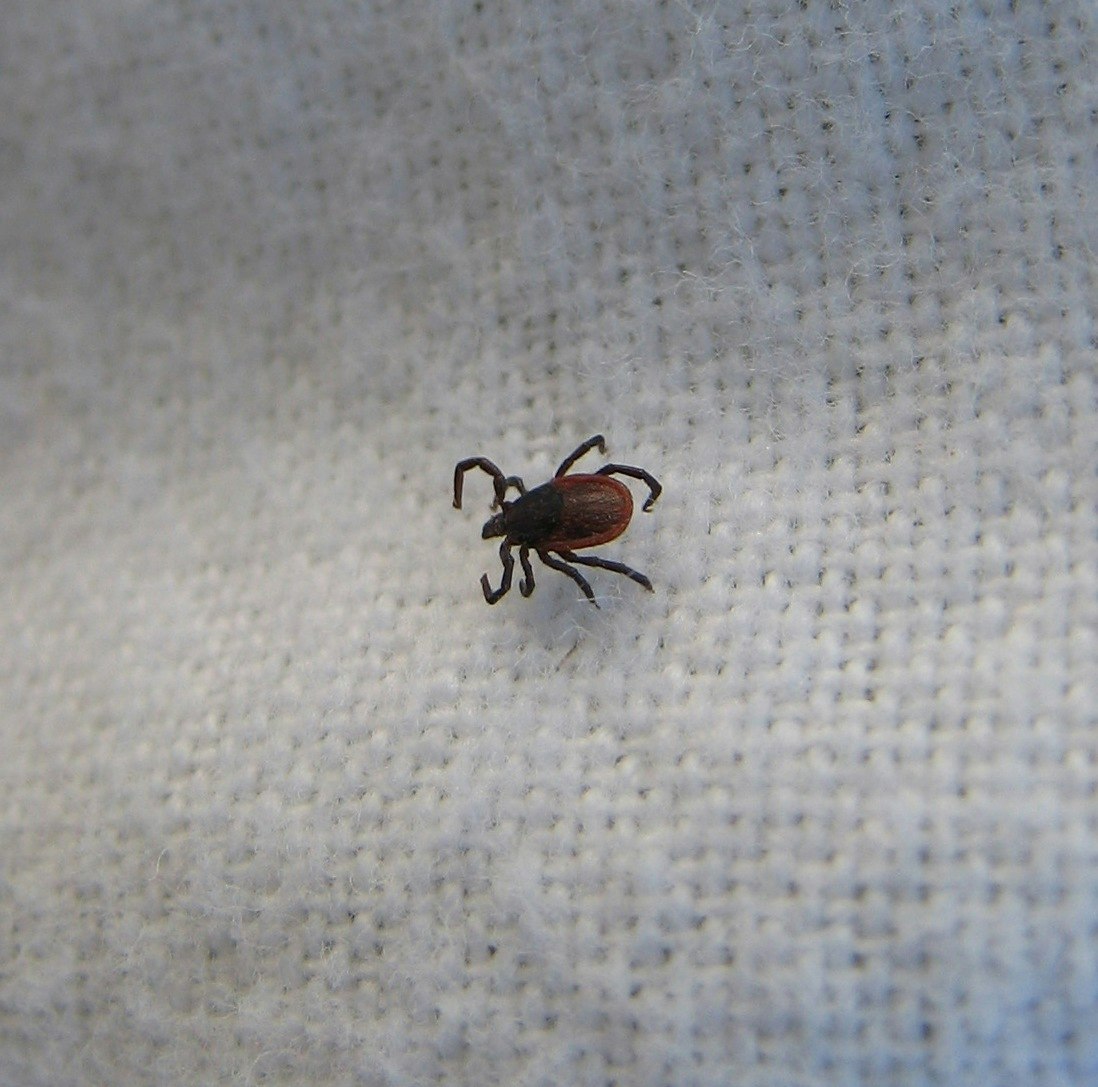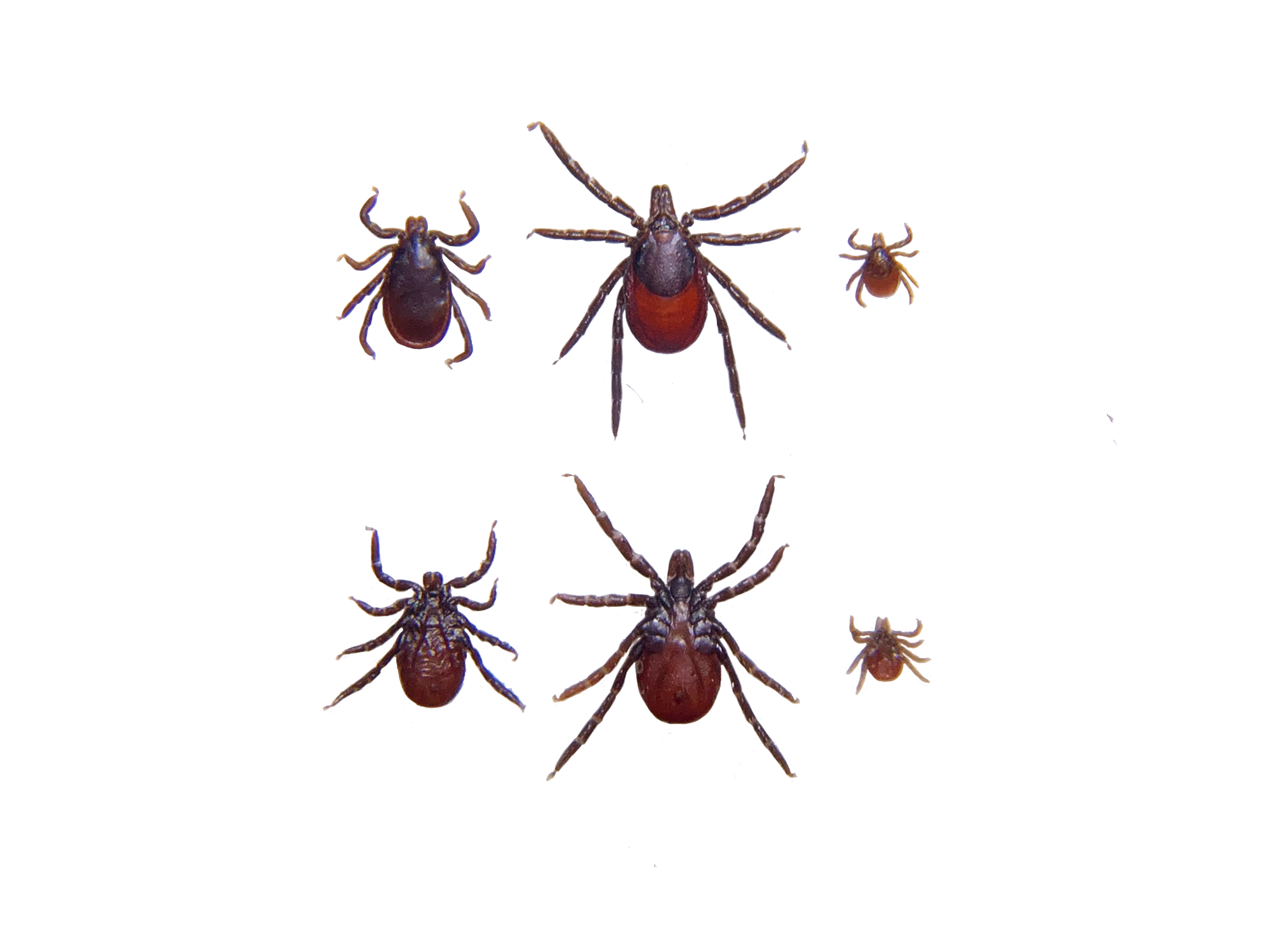Study of ticks on residential properties

In 2022, the District started a study to assess tick presence on residential properties in San Mateo County. Information from the study will be used to help understand which types of landscaping practices are associated with ticks.
You may have received a request from us to visit your property via social media, door hanger, or other means. If you would like your property to be considered for this study, please complete this form.
Background
It is currently assumed that residents of the San Francisco Bay Area are more likely to encounter ticks through outdoor recreation or outdoor occupations away from home than in their own yards. However, we do not currently know how often ticks are present in yards, or which factors may contribute to the presence of ticks in yards.
Information about the study

Our study focuses on properties near open space and natural areas where ticks are likely found. Residents can request their property be part of the study, and all participation is voluntary. Even if you don't think you have ticks in your yard, visiting your property is helpful to our study. We need to visit some yards with ticks and some without ticks to better understand which landscaping factors are more or less important to the presence of ticks in yards.
Residents do not need to be home when our staff visit (but we do always like to meet you and answer any questions you may have!), but our staff will need safe access to the front and back yards of the property even if you are not home. Our staff will call to arrange a date/time that works for you, and we'll not show up to the property without first contacting you.
Our visit to the property typically takes about 10-30 minutes, depending on the size of the property. Our staff will take a few notes about landscaping features and will use a white cloth on a stick to drag over vegetation to collect questing ticks. Our staff may ask if it is ok to take a few photos of the landscaping in your yard.

While most of our sampling will take place between November and March (to collect adults Ixodes ticks), sometimes properties may be sampled in the spring (March - May) for Ixodes nymphs.
Ticks will be grouped by the city they are collected for disease testing, so individual property results will not be available. We hope to collect data from enough yards to generate a manuscript for publication in a peer-reviewed scientific journal about our findings. No properties will be individually-identifiable in the manuscript. All findings will be generalized and focused on understanding key landscaping differences associated with the presence/absence of ticks on properties in San Mateo County.
If you have any questions about this study, please reach out! Call 650-344-8592 and ask about our 'ticks in yard' study.

Page last reviewed: December 6, 2024
